FUCHS Group has consistently been at the forefront of developing sustainable solutions in metal cleaning processes. This article explores the company’s innovative approaches, with a focus on low-temperature cleaners specifically for aluminium, multi-metal and ferrous materials. These solutions address the challenges of microbiological contamination, foamability, corrosion protection, and cleaning efficiency, while saving energy and water, reducing waste, and lowering operating temperatures.
Reducing the Product Carbon Footprint Through Low-Temperature Metal Cleaning
Metal cleaning is a critical process in various industries, including automotive, aerospace, and manufacturing. Traditional cleaning methods often involve harsh chemicals and high energy consumption, leading to environmental and economic concerns.
Washing at lower temperatures in the metalworking industry can have a significant impact on the Product Carbon Footprint (PCF). Lower temperature washing generally reduces energy consumption, which in turn decreases greenhouse gas emissions associated with heating processes. This reduction in energy use can lead to a lower overall PCF for metal products, as energy-intensive processes are a major contributor to carbon emissions in the industry.
Additionally, washing at lower temperatures can extend the lifespan of washing equipment and reduce maintenance needs, further contributing to a lower environmental impact. However, it is important to balance these benefits against the effectiveness of the washing process, as lower temperatures might not always achieve the desired level of cleanliness, potentially affecting product quality (e.g. poorer corrosion protection).
Here are some examples from the metalworking industry that highlight how lower temperature washing can contribute to more sustainable practices in that industry by reducing energy use and emissions:
- Heat Treatment Processes: Processes like annealing, quenching, and tempering often involve washing stages to remove contaminants and residues.
- Electroplating: In electroplating, metals are coated with a thin layer of another metal.
- Pickling: This process involves removing oxides and scale from metal surfaces using acid solutions.
- Degreasing: Many metalworking processes require parts to be degreased beforehand in order to remove any oil and lubricants.
This article sets out how the transition to a lower-temperature degreasing process is possible.
Challenge and Soluctions
Transitioning to lower-temperature cleaning in the metalworking industry can be highly beneficial, but it requires careful planning and implementation. Here are some effective strategies:
- Evaluate Current Processes: Conduct a thorough assessment of existing cleaning processes to identify areas where temperature reductions can be made without compromising cleaning effectiveness.
- Adopt Advanced Cleaning Agents: Use cleaning agents specifically designed for low-temperature operations. These agents often contain surfactants and additives that ensure effective cleaning at lower temperatures.
- Optimize Equipment: Upgrade or modify existing equipment to ensure efficient operation at lower temperatures. This might include installing more-efficient heat exchangers or insulation to minimize heat loss.
- Implement Process Controls: Use advanced process control systems to monitor and adjust cleaning parameters in real-time. This ensures optimal performance and energy efficiency.
- Training and Education: Train staff on the benefits and techniques of low-temperature cleaning. Proper training ensures that the transition is smooth and that employees understand how to maintain cleaning standards.
- Pilot Testing: Start with pilot tests to evaluate the effectiveness of low-temperature cleaning on a small scale before full implementation. This helps in identifying potential issues and making any necessary adjustments.
- Monitor and Adjust: Continuously monitor the performance of the new cleaning processes and adjust as needed. Regular reviews help in maintaining efficiency and addressing any emerging challenges.
With a focus on advanced degreasers, cleaning at lower temperatures in the metalworking industry presents several challenges that need to be addressed to ensure efficiency and effectiveness. Some of the key challenges are:
Reduced Emulsification Power:
Challenge: Lower temperatures can reduce the emulsification power of cleaning agents, making it harder to break down and remove oils and greases.
Increased Foam Levels:
Challenge: Lower temperatures can lead to higher foam levels, which can interfere with the cleaning process and cause operating issues.
Lower Solubility of Surfactants:
Challenge: Surfactants may have reduced solubility at lower temperatures, affecting their cleaning performance.
Reduced Corrosion protection
Challenge: Reduced cleanliness creates spots and loss of wetting properties. These spots are nucleation points for corrosion.
Microbial Control:
Challenge: Lower temperatures may not be high enough to kill all bacteria and pathogens, which is critical in certain applications.
Compatibility with Existing Equipment:
Challenge: Existing cleaning systems may need modifying in order to work efficiently with low-temperature cleaning agents.
Operational Changes:
Challenge: Implementing low-temperature cleaning may require changes in operating procedures and staff training.
Addressing these challenges involves a combination of advanced chemical formulations, effective foam management, and strategic operational adjustments.
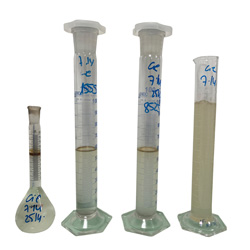
A Synergistic and Innovative Approach to Low-Temperature Challenges
At FUCHS, we don’t tackle problems in isolation. Instead, we take advantage of the synergies offered by a specially designed surfactant package, which allows us to address common low-temperature issues in a comprehensive and cross-functional way. Our formulation strategy is based on optimizing the entire process, not just individual challenges. By integrating multifunctional additives that work in harmony, we ensure that our low-temperature cleaners deliver consistent performance and enhanced stability along degreasing needs of different metal substrates, which includes Aluminium (RENOCLEAN MSO 3006) and Multi-metal (RENOCLEAN MSO 3008 and RENOCLEAN FSO 4008).
The new RENOCLEAN product rangeovercomes the usual issues of low-temperature cleaning:
Microbiological Contamination
Solution: The development of new formulations that include special amines and acids to increase stability and prevent microbiological growth.
Foamability
Solution: Incorporating new surfactant packages that improve wetting and rinsing while controlling foam levels. In addition, by improving the demulsification properties of the products, it is possible to take advantage of the defoaming effect of the removed oil itself without the need to add a defoamer as a tank treatment.
Corrosion Protection
Solution: Balancing detergency and demulsification to extend bath life and enhance corrosion protection, as seen with the chloride-free, oil rejection additive found in RENOCLEAN MSO 3008, RENOCLEAN MSO 3006 and RENOCLEAN FSO 4008.
Cleaning Efficiency
Solution: Using advanced wetting agents and optimizing the synergy between different chemical components to improve overall cleaning performance.
Below is a lab study comparing traditional cleaner technology to new low-temperature cleaner technology, where changes introduced show a better aspect of the fluids in service (oil content on the top and fresh water on the bottom, which allows for a better disposal of oil and water reuse).
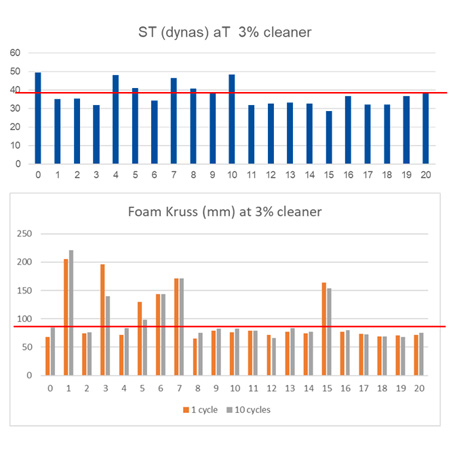
A clear difference can be seen comparing results where previous and new product is applied.
Lab study of degreasing and corrosion protection on aluminium substrates (5 cycles in humidity chambers):
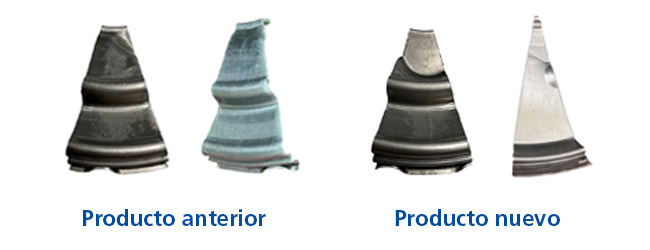
Lab study of degreasing and corrosion protection on hot-galvanized steel substrates (2 cycles in humidity chambers):
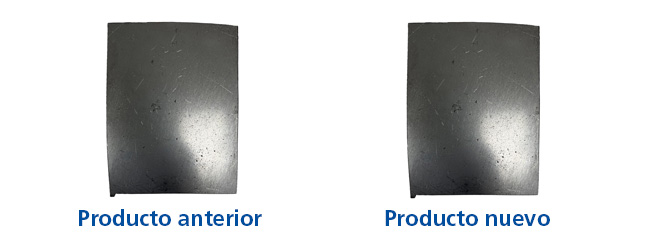
Lab study of degreasing and corrosion protection on low-carbon steel substrates (3 cycles in humidity chambers) after dipping in a 3% cleaner emulsion at 60 ºC and room temperature, showing old technology versus new technology:
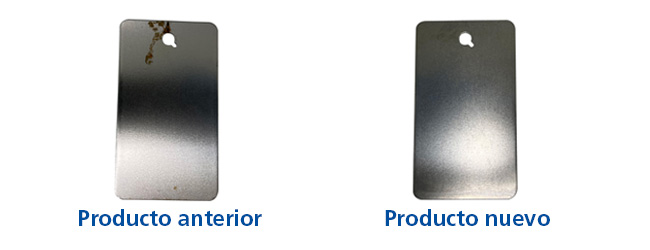
Innovative Metal Cleaning Solutions: Automotive industry customer cases
- RENOCLEAN MSO 3008
A corporate group in northern Spain specializing in spray cleaning of steel and multi-metal parts successfully implemented RENOCLEAN MSO 3008 in their operations. This solution enabled a significant reduction in operating temperature, lowering it from 65 °C to 35 °C. The resulting improvement in energy efficiency translated into annual savings of approximately €33,000, directly enhancing the plant’s productivity.
From a quality and environmental standpoint, the introduction of RENOCLEAN MSO 3008 led to a notable extension of bath life, reducing the frequency of bath replacement. Furthermore, no complaints were reported regarding cleaning performance throughout the usage period, indicating a stable and reliable cleaning process. These benefits are attributed to the product’s advanced formulation, which incorporates new amine technology, a wetting agent, and a chloride-free oil rejection additive. This combination not only enhances cleaning efficiency and corrosion protection but also minimizes foam formation and microbiological contamination within the system.
Operationally, the adoption of RENOCLEAN MSO 3008 resulted in a streamlined inventory and a reduction in associated maintenance tasks. This optimization contributed an additional €21,000 in annual savings. Altogether, the company achieved a total reduction in operating costs of nearly €500,000 per year, positioning RENOCLEAN MSO 3008 as a highly efficient and sustainable solution for industrial cleaning processes in demanding environments.
- RENOCLEAN MSO 3006
Grupo Estampaciones Mayo, a company specializing in the stamping of aluminium and hot-galvanized steel, adopted RENOCLEAN MSO 3006 for its spray cleaning processes, traditionally carried out at 65 °C. The implementation of this solution enabled a substantial reduction in energy consumption, allowing effective cleaning at just 35 °C and resulting in energy savings of approximately 50%. This transition not only improved process efficiency but also contributed significantly to the company’s sustainability goals.
The impact on quality and environmental performance was equally notable. The bath life was extended dramatically—from one month to nine months—reducing the frequency of bath changes and associated downtime. Additionally, the company experienced a 70% reduction in cleaning-related complaints, reflecting a marked improvement in cleaning consistency and reliability. Waste generation was also reduced by 75%, further supporting the company’s environmental objectives.
Operationally, the use of RENOCLEAN MSO 3006 led to an 80% reduction in the number of stock items required, decreasing from three to one, and simplifying the overall management of cleaning operations. These improvements are largely attributed to the product’s advanced formulation, which combines a synergistic blend of special amines and acids to enhance chemical stability, along with a new surfactant package that improves wetting and rinsing. The formulation also achieves an optimal balance between detergency and demulsification, which contributes to the extended bath life and overall process stability.
A testimonial of this case can be found in this video.
Sustainability Impact
FUCHS Group’s commitment to sustainability is reflected in its comprehensive approach to reducing CO2 emissions and promoting circular economy practices. By developing products such as RENOCLEAN MSO 3006, RENOCLEAN MSO 3006 RENOCLEAN FSO 4008, FUCHS not only improves cleaning efficiency but also contributes to significant environmental benefits, including lower energy and water consumption and less waste production.
Cleaning at lower temperatures in the metalworking industry can lead to significant energy savings and cost reductions. Here are some key points:
- Energy and Water Savings: Reducing the cleaning temperature from 60 °C to 30 °C can yield energy savings of up to 50%15 as well as water savings through reduced evaporation.
- CO2 Emission Reductions: In addition to energy savings, lowering the cleaning temperature can also significantly reduce carbon dioxide emissions. To illustrate, a reduction in cleaning temperature can lead to CO2 emission reductions ranging from 200 to 500 kilotons per annum.
- Operational Efficiency: Lower temperatures can also improve operating efficiency by extending the service life of the cleaning bath and reducing waste.
- Worker Comfort: Operating at lower temperatures can create a more comfortable working environment by reducing heat and humidity in the production area.